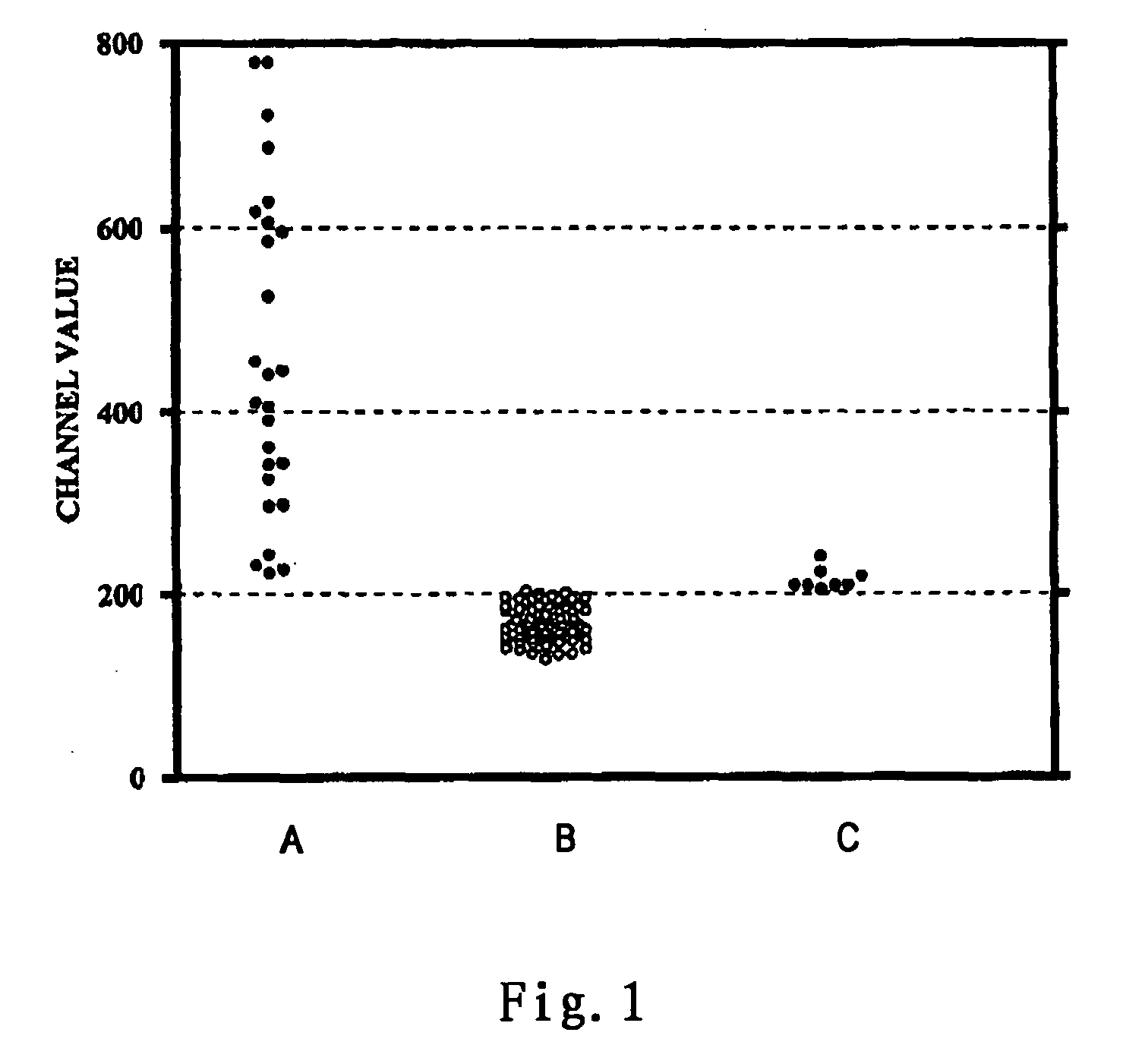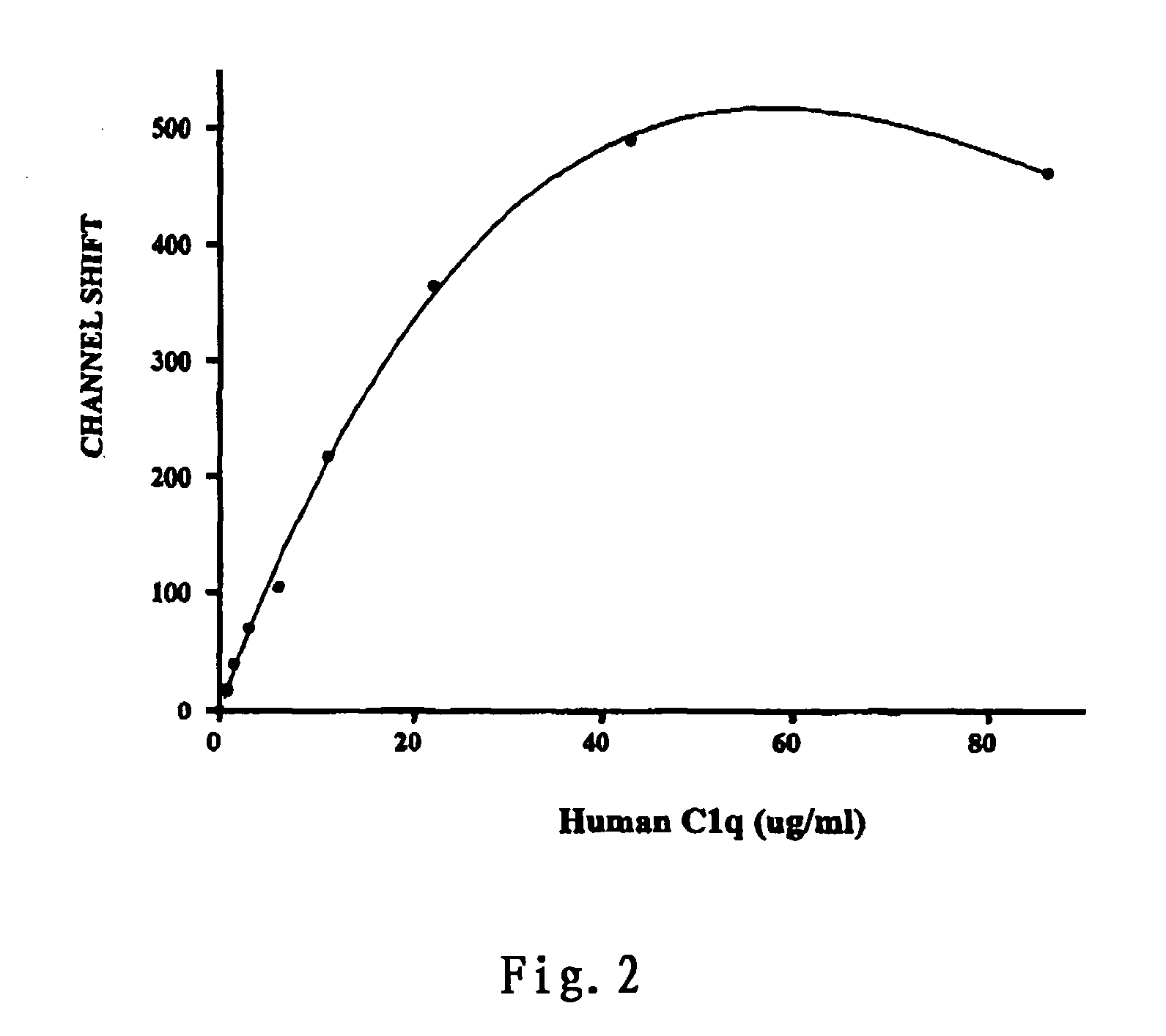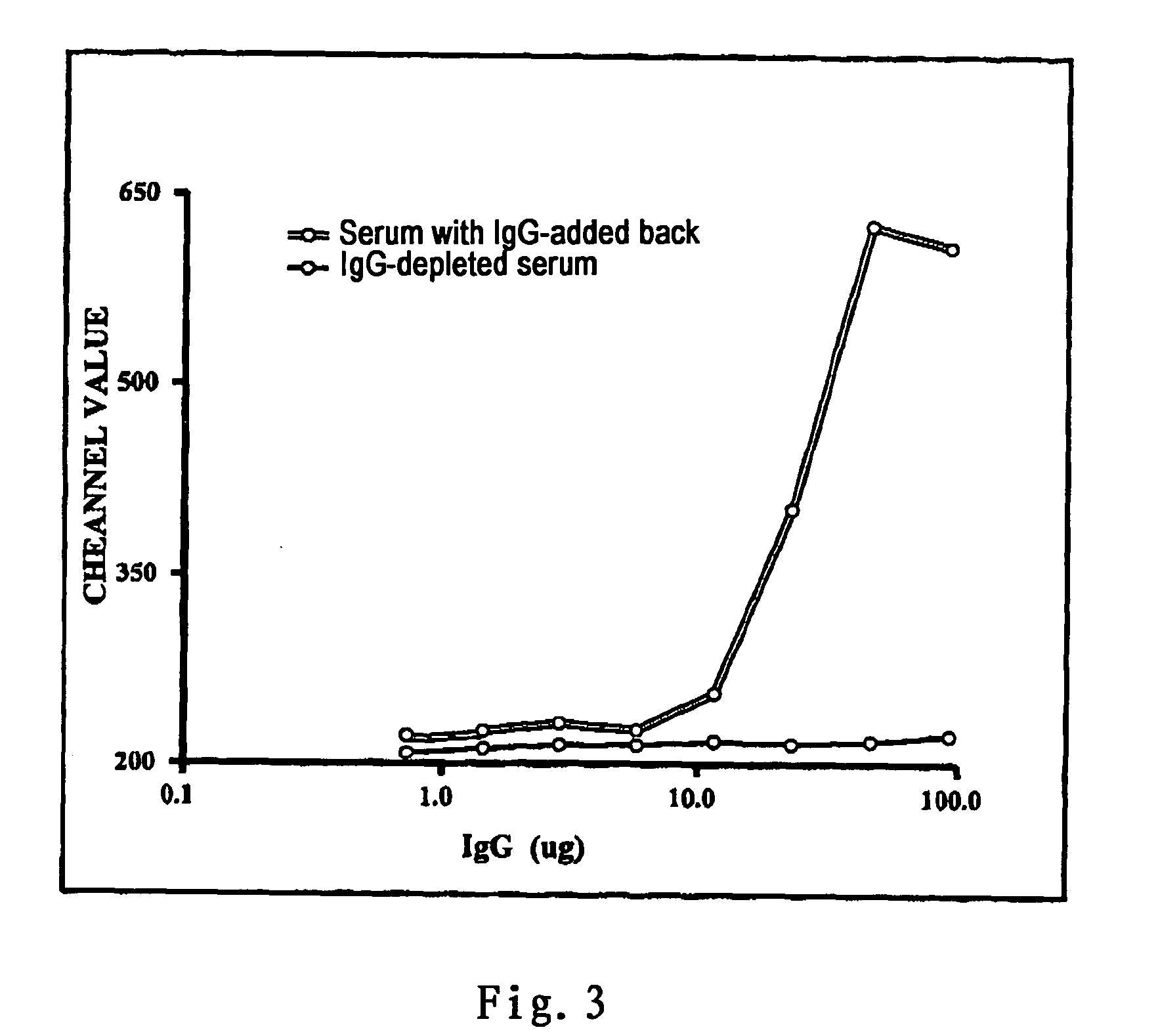Method and kit for donor specific complement-fixing antibodies crossmatch
a technology of complement-fixing antibodies and kits, which is applied in the field of complement-fixing antibodies (cfabs) measurement, can solve the problems of neither fixing complements nor inducing cdc effects, organ transplantation failure, and low sensitivity
- Summary
- Abstract
- Description
- Claims
- Application Information
AI Technical Summary
Benefits of technology
Problems solved by technology
Method used
Image
Examples
example 1
T Cell Crossmatch Method
[0066] (1) To a 1.5 ml Eppendorf centrifuge vial, 0.1˜0.25×106 mononuclear cells of the donor prepared by Ficoll-Hypaque density-gradient centrifugation method was added.
[0067] (2) The cells were centrifuged at 800 g for 5 minutes and the supernatant was aspirated.
[0068] (3) 25 ul test serum of the recipient was added to the vial and mixed well genteelly. Then the mixture was incubated for 10 minutes at room temperature (˜25° C.).
[0069] (4) 30 ul FITC-anti human C1q (BIODESIGN; 1:30 diluted in 5% FCS / HBSS) and 10 ul PerCP CD3 (BD Biosciences) were added and mixed well. The mixture was incubated for an additional 20 minutes at 4° C.
[0070] (5) 0.5 ml wash buffer (5% FCS / HBSS) was added to the reaction mixture. The mixture was centrifuged and the supernatant was aspirated. The washing was repeated once again.
[0071] (6) After the second wash, the cell pellet was resuspended in 0.5 ml 1% paraformaldehyde. The samples were analyzed on a flow cytometer (FACSca...
example 2
Direct Cross-Match Method
[0072] (1) The serum of the recipient was incubated at 56° C. for 30 minutes to inactivate autologous complements.
[0073] (2) 25 ul of the above serum and 10 ul of FITC-C1q were added to a test tube containing 0.1˜0.25×106 mononuclear cells from the donor, and the mixture was incubated at room temperature for 10 minutes.
[0074] (3) 10 ul PerCP CD3 (BD Biosciences) was added to the tube and mixed well. The mixture was incubated for an additional 20 minutes at 4° C.
[0075] (4) The samples were washed and analyzed according to the same process as in the steps (5) and (6) in Example 1
example 3
B Lymphocyte Cross-Match
[0076] The substantially same procedures as in Example 1 were carried out except that PerCP CD3 was replaced with PE labeled CD19.
PUM
 Login to View More
Login to View More Abstract
Description
Claims
Application Information
 Login to View More
Login to View More - R&D
- Intellectual Property
- Life Sciences
- Materials
- Tech Scout
- Unparalleled Data Quality
- Higher Quality Content
- 60% Fewer Hallucinations
Browse by: Latest US Patents, China's latest patents, Technical Efficacy Thesaurus, Application Domain, Technology Topic, Popular Technical Reports.
© 2025 PatSnap. All rights reserved.Legal|Privacy policy|Modern Slavery Act Transparency Statement|Sitemap|About US| Contact US: help@patsnap.com



